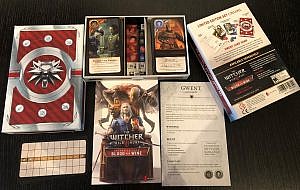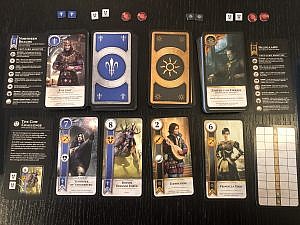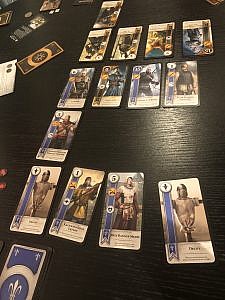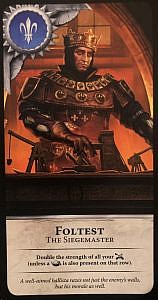Gwent is a wonderful limited edition collectible for any The Witcher fan. It is a great strategic card game for non-fans as well.

Gwent was first introduced in the third Witcher video game. The physical Nilfgaardian Empire vs. Northern Realms set was initially only available in the Xbox One Collector’s Edition of Witcher 3: The Wild Hunt. Later the set was reissued together with Blood and Wine, the second expansion to the video game. This time the set was made available for any player that had purchased the expansion, but it had to be separately ordered.
Getting the game going takes some time as you need to go through the rules and build your deck. Once you get the hang of it, playing Gwent itself doesn’t take long. Rules are simple and only one paper sheet long. The player who has more points wins the round, and the one who wins two rounds wins the game.
Building the deck isn’t complicated in Gwent as it isn’t a very complicated game. However, it doesn’t mean that you couldn’t utilize your strategic prowess. The rules sheet give the idea for the basic deck and while there is not too much to choose from there is enough for versatility. The deck will consist of 1 leader card, at least 22 unit and maximum of 10 special cards and a hand is limited to ten cards.

Leader card is the leader of the faction, and it is what determines the type of deck you will use, as it gives you a unique special ability you may use during the battle. For example, I played the Northern Realms and chose Foltest The Siegemaster as my leader which doubled the strength of my siege combat cards, and eventually helped me obliterate the opponent. I do not like winning easily or quickly, but then again, I love it when I can crush my enemy!
Unit cards are the basic cards with three different types: siege, ranged and combat. Each type also represents a row where the card can be inserted. These rows can be affected with specials such as de-buffing weather conditions. For example playing a special card like Biting Frost causes each combat-type card to reduce to 1 strength, for both players. I played this to my advantage since it didn’t affect my Siegemaster shenanigans, but it was detrimental to my partner relying on combat.

Some unit cards are labeled Heroes, depicted by the main characters of the video game. I felt that the hero cards were too overpowered, which took a bit of fun out of the game. For example, Ciri and Geralt are the strongest cards with 15 points each and special cards, like de-buffing weather elements, do not affect them. Both factions also have the same hero cards, which is a lazy design choice in my opinion. Also, why doesn’t Geralt’s noble steed, Roach, get a card of its own? Roach is the true hero after all!

Overall Gwent is well designed and fun to play. It has a good rhythm to it and the mechanics are intriguing. Pairing it together with the awesome soundtrack of The Witcher games makes a great experience!

Designer: Damien Monnier
Publisher: CD Projekt Red
Release date: 19.5.2015 / 31.5.2016
Number of players: 2
Playing time: 5 – 45 minutes
Ages: 14 +
